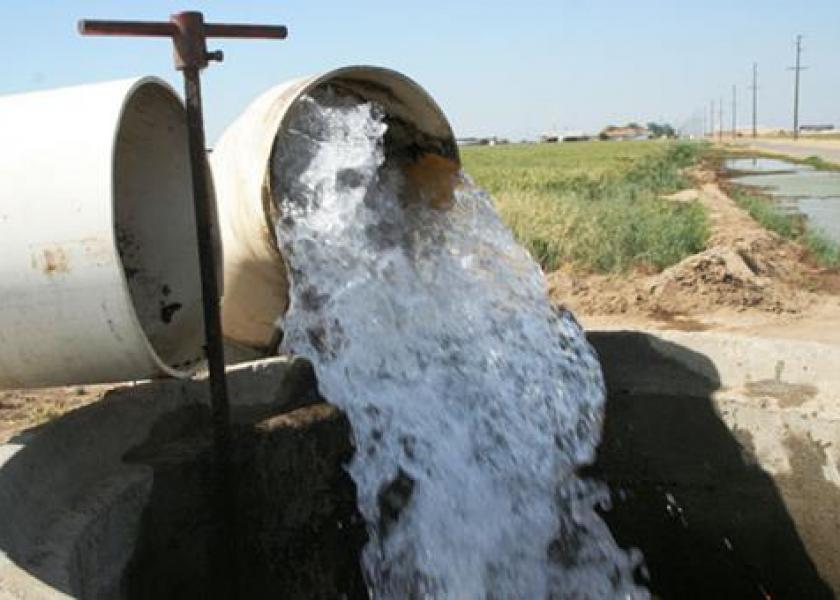Despite the Drought, California's Dairies Make Do

High milk prices bring relief, but feed prices, especially for forages, are escalating. Is there hope from El Nino?
In California, the corn has been planted, cows are making milk, and dairy producers are finally back in the black with $20 milk prices.
But first and foremost on every farmer’s mind is the drought, now in its third straight year. Feed prices, especially for forages, are escalating as limited water supplies reduce crop production in the nation’s No. 1 farm state.
"Everybody’s relieved with the high milk prices, but the drought is a huge concern," says Devin Gioletti, who, with his family, operates a 2,200-acre farm and 2,200-cow dairy near Turlock, Calif., south of Modesto.
"It’s becoming more expensive and difficult to obtain forages," says Joel Karlin, market analyst with Western Milling, near Goshen, Calif.
Karlin says hay prices have reached all-time highs of $360-$370 per ton. Corn silage is close to record levels at $65-$70 per ton. Prices for almond hulls, a common feed component at Central California dairies, have risen to $200 per ton, close to their highest-ever level.
The drought has spurred changes in the feed rations at many California dairies. Many producers have removed expensive alfalfa hay from their herd rations. To use less water in their fields, some opted to plant grain sorghum instead of corn for silage to feed their herds.
Those who depend on groundwater are closely monitoring their wells. "I lost one well, and lowered a couple of others [to deeper pumping levels]," says Tulare dairy producer Tom Barcellos.
 |
Dairy producer Tom Barcellos of Tulare, Calif., foresees forage prices becoming "ridiculously high" as the state's drought continues. |
Normally, some 80% of Barcellos’ water supplies comes via surface deliveries from the federally owned Friant Canal. But federal water allotments this year are at zero, leaving Barcellos entirely dependent on groundwater. He fallowed 160 acres of corn and milo this year as a result. "But I was fortunate enough to buy additional hay early and I bought forage from a neighbor," he says. "I’ve got enough to get me through the season."
Looking ahead, Barcellos says "forages will be ridiculously high," and his biggest concern will be how much water will be left in groundwater wells come October and November -- just before California’s typical rainy season begins.
Farther north near Modesto, where farmers depend more on surface water than underground wells, a new development has worsened this year’s drought for many farmers like the Giolettis.
They are among many farmers in several area irrigation districts who received notice early this month that their diversions from the San Joaquin and Sacramento Rivers would immediately be curtailed due to "unavailability of water."
The letter, from the State Water Resources Control Board, applies to those who have post-1914 water rights, which Gioletti believes affects several thousand farmers. The notice warns of steep fines, cease and desist orders or court prosecution if those water-rights holders divert water from the rivers.
"We were pre-irrigating land for corn when we received the letter and had only two days’ notice to stop pumping water," Gioletti says.
In response, the Giolettis have fallowed 300 acres of land they lease near their dairy. But they have enough remaining acreage planted to corn, oats, and alfalfa to feed their herd. "We’re feeding a high-silage diet of mostly wheat, hay or straw and buying protein to displace alfalfa," he says.
Some of their land sits in the Turlock Irrigation District, which – though it cut water deliveries this year – still will supply about half its normal amount of water to customers. In addition, the Giolettis have three groundwater wells they can tap.
"We also have two lagoons on our dairy, and we’re treating one like a reservoir," says Gioletti. "We’re irrigating our corn from that."
Barcellos says that despite the drought’s challenges, "there's a quiet confidence among dairy farmers that they’ll get through this." In fact, California's milk production last month increased 1% over year-ago levels, to 3.756 billion pounds for the month. The robust milk prices are driving the Golden State's higher milk output.
Gioletti too is pleased with this year’s extended stretch of strong milk prices. But the outlook from California's fields is worrisome.
"If it doesn’t rain this winter or we don’t get adequate snowpack, it could be apocalyptic," Gioletti says. "The state’s reservoirs will be empty after this season, and we could be in uncharted waters."
It’s possible, however, that the worst may not occur and that California’s drought could end this year. The National Oceanic and Atmospheric Administration (NOAA) indicates the weather phenomenon known as El Niño may develop as early as summer or fall of 2014. Typical El Niño impacts in the U.S. include above-average rainfall in the West and suppressed hurricane activity in the East, although neither is guaranteed and largely dependent on El Niño's strength, NOAA says.







